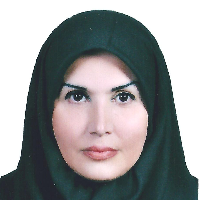Assessing the Social Sustainability of Neighborhoods Using Participation Indicators (Case study: Hesarak Neighborhood Adjacent to Islamic Azad University of Science and Research)
Universities play a significant role in sustainable development in various aspects, especially sustainable local social development. Therefore, the purpose of this study is to investigate the effects of a neighboring university on the social sustainability of the neighborhood using participation indicators.
This research was conducted by survey method with the help of a researcher-made questionnaire with 29 items that the respondents of the questionnaire are residents of 18-75 years of Hesarak neighborhood. The statistical population of this study, the residents of the neighborhood, was estimated at about 7090 people, of which 400 people were collected as a statistical sample with required information in year 2018. The validity of the questions was assessed by calculating Cronbach''s alpha coefficient and one-way t-test was used to analyze the questionnaires and finally Friedman ranking test was used to weigh the research indicators.
The analysis of social sustainability indicators shows that, contrary to expectations, the biggest problem of this neighborhood is related to social instability due to weakness in the level of participation. Therefore, one of the strongest tools to create participation in the neighborhood is to increase local, cultural and recreational group participation and flexible monitoring of group and group activities by creating a sense of trust between the university and neighborhood residents.
The analysis of the social effects of Azad University on the surrounding neighborhood indicates that the Azad University of Science and Research has had positive effects on the neighborhood (Hesarak neighborhood). According to the studies of this research, the effect on social participation at a high level and the effect on social cohesion in the next category and finally, social architecture and support has the lowest level, which can be in the absence of a comprehensive approach. University officials considered the relationship between the university and the spatial, social and cultural structure of the surrounding neighborhood.
- حق عضویت دریافتی صرف حمایت از نشریات عضو و نگهداری، تکمیل و توسعه مگیران میشود.
- پرداخت حق اشتراک و دانلود مقالات اجازه بازنشر آن در سایر رسانههای چاپی و دیجیتال را به کاربر نمیدهد.


